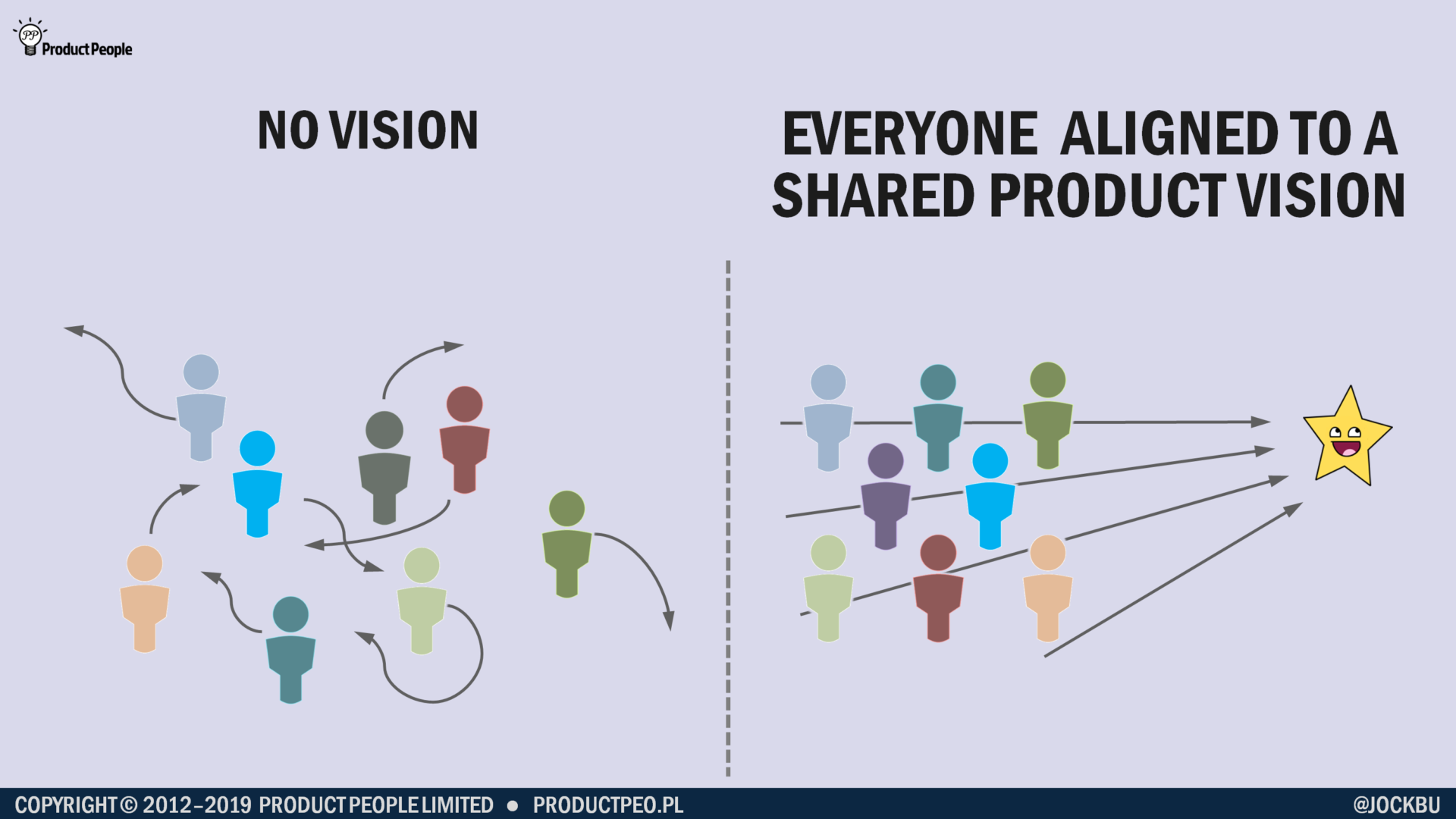
69: It matters what you say and what you do
I’m writing about 100 things I’ve learned the hard way about product management. You can catch up on the previous entries if you like.
One of the things I find myself advising product teams to do most often is to work on their product vision. Rather than trying to be the market leader in X or achieve Y% market share, they need to identify the positive human impact of their product – why it matters – a goal which in turn will inspire the team to work hard to achieve.
What I perhaps naïvely assume each time is that words are backed by actions – that the stated product vision and company mission are in fact what the organisation is actively working towards. Disappointingly, this is not always the case.
In this article #
Healthy people or healthy bank balance?
I came across a company once whose mission was ostensibly the worthy goal of improving people’s health. In reality, their day-to-day business was more focused on making unscrupulous health insurance companies richer.
The company had a product that profiled people’s health by aggregating and analysing data from calorie counters, fitness trackers, smartphones, sleep monitors and so on. The product would then suggest changes in lifestyle to reduce the risk of the individual contracting particular conditions in the future. The idea was that they could identify individuals at risk of, for example, type 2 diabetes and nudge them to alter their behaviour in ways that would reduce the risk.
The vast majority of the employees who worked there genuinely believed that they could make a positive difference to people’s health, and potentially save lives in the long run. They were motivated and wanted to work hard to succeed.
Their main customers were large health insurers. At first blush, this would seem to be a good fit. But this makes the assumption that all health insurers share the desire to nudge their own customers into healthier lifestyles. While there are health insurers who genuinely want to do this, not all do.
An aside about health insurers
Health insurers are generally not obliged to insure everyone. They essentially have a kind of ‘investment portfolio’ of the customers they choose to insure. They profile each potential customer based on the premium they would pay versus the likelihood of that person contracting a condition that would require the insurer to pay out for their treatment. They also take into account government subsidies available for particular treatments and therefore the profitability of certain medical conditions.
Talk about a poorly-designed incentive: subsidies can introduce a financial reward for health insurers in some countries if their customers get ill with certain conditions.
The health insurers look at their customer portfolio rather like set of investments. They can balance the lower-risk, healthy customers, who pay lower premiums and are only slightly profitable, with higher-risk customers, who pay a higher premium but are only profitable if they don’t contract a condition that is expensive for the insurer to pay to treat. And then there are the customers who are likely to contract those conditions receiving government subsidies that are actually profitable for the insurer to treat.
So when you introduce a product to health insurers that can predict an individual’s likely future medical conditions, it’s a bit like giving a financial trader inside information that allows them to anticipate market moves. The health insurers can weaponise the information to rebalance their investment portfolio, which in human terms means preferring to insure only the more profitable customers, rather than people who just need health insurance because they can’t afford to pay for treatments otherwise.
For readers elsewhere in the world, in the UK we have the wonderful thing that is the National Health Service: healthcare funded by taxpayers that is comprehensive and free at the point of delivery for everyone, regardless of whether they’re likely to need it more than others. With such a system in place, there is none of the systematic bias that you tend to see in countries without universally-available, publicly-funded healthcare.
Alignment always matters

To return to the company responsible for the healthier lifestyle product, there was a chasm between the stated goals of the company (to make people healthier) and their actual business activity (helping unscrupulous health insurers to make more money to the detriment of certain groups of people).
No matter how often the senior management team reiterated their mission was to improve people’s health, their actions spoke louder than words. It was only a matter of time before the rest of the company realised they were contributing more to the problem rather than the solution and voted with their feet.
While this is an admittedly extreme example of misalignment of mission and day-to-day activity, it does serve to remind us to scrutinise our own product strategy.
Final thoughts
As product managers, we not only have the responsibility for creating successful and ethical products people love, but also to ensure that we act ethically when we bring them to market.
Determine whether your company’s words and deeds are truly aligned.
Think about whether your customers will use your product for good or harm.
Consider whether your company measures success by revenue or by positive human impact.
Ask yourself whether you are part of the problem or the solution.
Then – if you need to – do something about it.


Leave a Reply